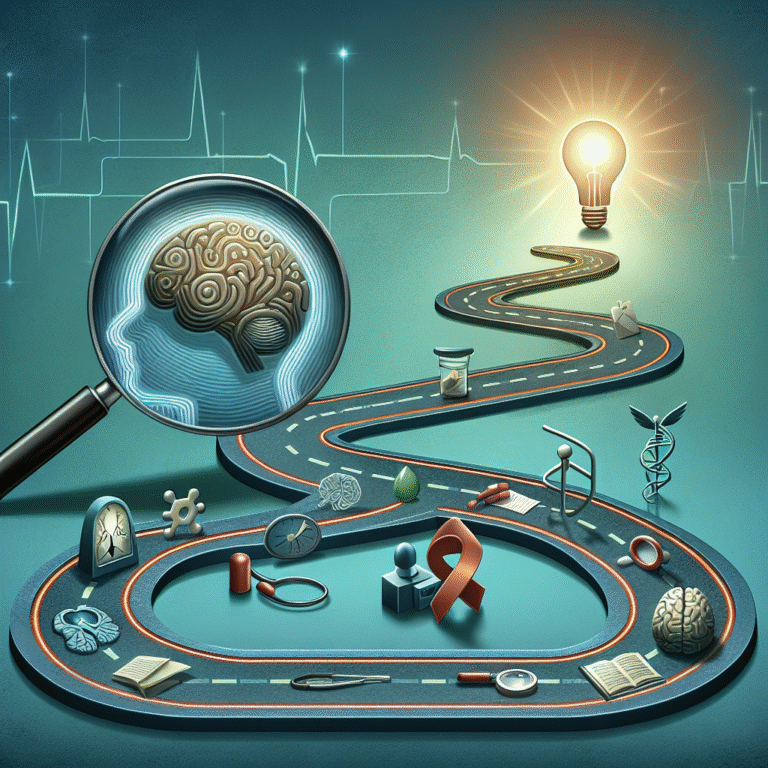Introduction
Imagine a soldier returning from battle, left with both physical wounds and the unbearable weight of emotional scars. Now, envision that same individual not only recovering but thriving, reshaping their life through the power of their mind. This isn’t just wishful thinking; it’s a testament to the incredible adaptability of the human brain. The Power of Neuroplasticity: How the Brain Heals After Injury is not just an academic concept; it’s a life-changing phenomenon that has profound implications for recovery and resilience.
Neuroplasticity, simply put, is the brain’s ability to reorganize itself by forming new neural connections throughout life. Whether due to trauma, injury, or simply the passage of time, understanding neuroplasticity offers hope and practical strategies for healing and recovery. In this exploration, we will dissect the mechanics of neuroplasticity and discover how it can pave the way for recovery, empowerment, and growth.
Understanding Neuroplasticity
What is Neuroplasticity?
Neuroplasticity is the brain’s inherent ability to change its structure and function in response to new experiences. This process is crucial during recovery from brain injuries, stroke, and neurological disorders. It enables the brain to adapt to changes, reclaim lost functions, and even enhance capabilities.
The Different Types of Neuroplasticity
Functional Plasticity: This refers to the brain’s ability to move functions from damaged areas to undamaged areas. For instance, if one hemisphere of the brain is injured, the other hemisphere can take over certain tasks.
- Structural Plasticity: This involves the physical change in the brain’s structure. It can happen due to learning, experience, or injury.
The Science Behind Healing
How Neuroplasticity Works
The Power of Neuroplasticity: How the Brain Heals After Injury can be attributed to the formation of new neural connections and pathways. When a brain area is damaged, several biological processes occur, allowing adjacent brain cells to form new connections. This restorative process is influenced by various factors, including:
- Age: Younger brains generally exhibit more plasticity than older ones.
- Environment: Stimulating environments enhance the brain’s capacity to rewire itself.
- Training and Experience: Engaging in activities that challenge and stimulate the brain promotes neuroplasticity.
Case Studies in Neuroplasticity
Real-world applications of neuroplasticity illustrate its transformative potential. Here are a few compelling case studies:
Case Study 1: The Remarkable Recovery of a Stroke Survivor
Background: Anne, a 52-year-old woman, suffered a stroke that left her unable to speak.
Treatment: Her rehabilitation included intensive speech therapy and cognitive exercises, focusing on areas of the brain unaffected by the stroke.
Outcome: Within months, Anne regained her ability to speak and even learned new languages. This recovery was possible due to the activation of alternative neural pathways.
Case Study 2: Overcoming Traumatic Brain Injury (TBI)
Background: Tom, a young athlete, experienced a severe TBI during a football game, leading to cognitive impairments and memory issues.
Treatment: His therapy involved a mix of physical rehabilitation, neurofeedback, and cognitive exercises aimed at strengthening his mental functions.
Outcome: Through consistent effort, Tom gradually regained his memory and cognitive abilities, showcasing the brain’s potential to adapt in the face of adversity.
| Case Study | Condition | Therapeutic Approach | Results |
|---|---|---|---|
| Anne | Stroke | Intensive speech therapy | Regained speech and learned new languages |
| Tom | TBI | Physical rehab and neurofeedback | Improved memory and cognitive function |
The Mechanisms of Neuroplasticity in Healing
Brain-Derived Neurotrophic Factor (BDNF)
BDNF plays a pivotal role in neuroplasticity and is crucial for the survival, growth, and differential function of neurons. Higher levels of BDNF promote neuroplasticity, encouraging brain healing. Activities such as exercise, meditation, and even proper nutrition can significantly increase BDNF levels.
The Role of Mindfulness and Mental Training
Practices such as mindfulness meditation can create significant changes in the brain’s structure. Regular mindfulness practice has been shown to:
- Enhance gray matter density in the hippocampus,
- Increase cortical thickness, and
- Improve emotional regulation.
The Impact of Physical Rehabilitation
Physical rehabilitation is instrumental in promoting neuroplasticity. Techniques such as Constraint-Induced Movement Therapy (CIMT) can lead to remarkable improvements in motor skills and demonstrate the brain’s resilience in reclaiming lost abilities.
Harnessing the Power of Neuroplasticity in Daily Life
Everyday Strategies for Enhancing Neuroplasticity
Engage in Physical Activity: Regular exercise boosts BDNF levels and overall brain health.
Stay Mentally Active: Learning new skills, whether playing an instrument or solving puzzles, can stimulate brain connectivity.
Practice Mindfulness: Meditation and mindfulness techniques foster emotional regulation and cognitive flexibility.
Nurture Social Connections: Socializing and maintaining relationships contribute positively to mental health and promote neuroplasticity.
- Get Adequate Sleep: Sleep is crucial for memory consolidation and brain health. Aim for restorative sleep to support neuroplasticity.
Conclusion
The Power of Neuroplasticity: How the Brain Heals After Injury offers a blueprint for understanding and harnessing the brain’s remarkable capacity for self-repair. Through consistent efforts in therapeutic practices, lifestyle adjustments, and a commitment to lifelong learning, individuals can tap into this inherent capability to regain lost functions, adapt to new challenges, and enhance their overall quality of life.
In our ever-evolving world, the journey of healing and adaptation embodies the spirit of resilience and potential. By embracing neuroplasticity, we can transform not only our lives but also inspire those around us to embark on their healing journeys.
FAQs
1. What is neuroplasticity?
Neuroplasticity is the brain’s ability to reorganize itself by forming new neural connections throughout life. It plays a vital role in recovery from brain injuries and other neurological conditions.
2. How does neuroplasticity help in recovery from injury?
Neuroplasticity allows the brain to adapt by transferring functions from damaged areas to healthy ones, forming new pathways that can take over the lost abilities.
3. Can anyone benefit from neuroplasticity?
Absolutely! Everyone has the capacity for neuroplasticity. Activities that stimulate the brain, such as learning new skills or engaging in physical activity, can enhance neuroplasticity.
4. What role do emotions play in neuroplasticity?
Emotions significantly impact neuroplasticity. Positive emotional experiences can enhance brain function and resilience, whereas negative emotions can hinder the adaptability of the brain.
5. How long does it take to see the effects of neuroplasticity?
The timeline varies depending on the individual and the extent of the injury or condition. However, consistent practice and engagement in stimulating activities can lead to improvements within weeks to months.
By understanding The Power of Neuroplasticity: How the Brain Heals After Injury, we embark on a journey toward self-discovery, empowerment, and healing, proving that our minds can rise against adversity and reshape our reality in incredible ways.














